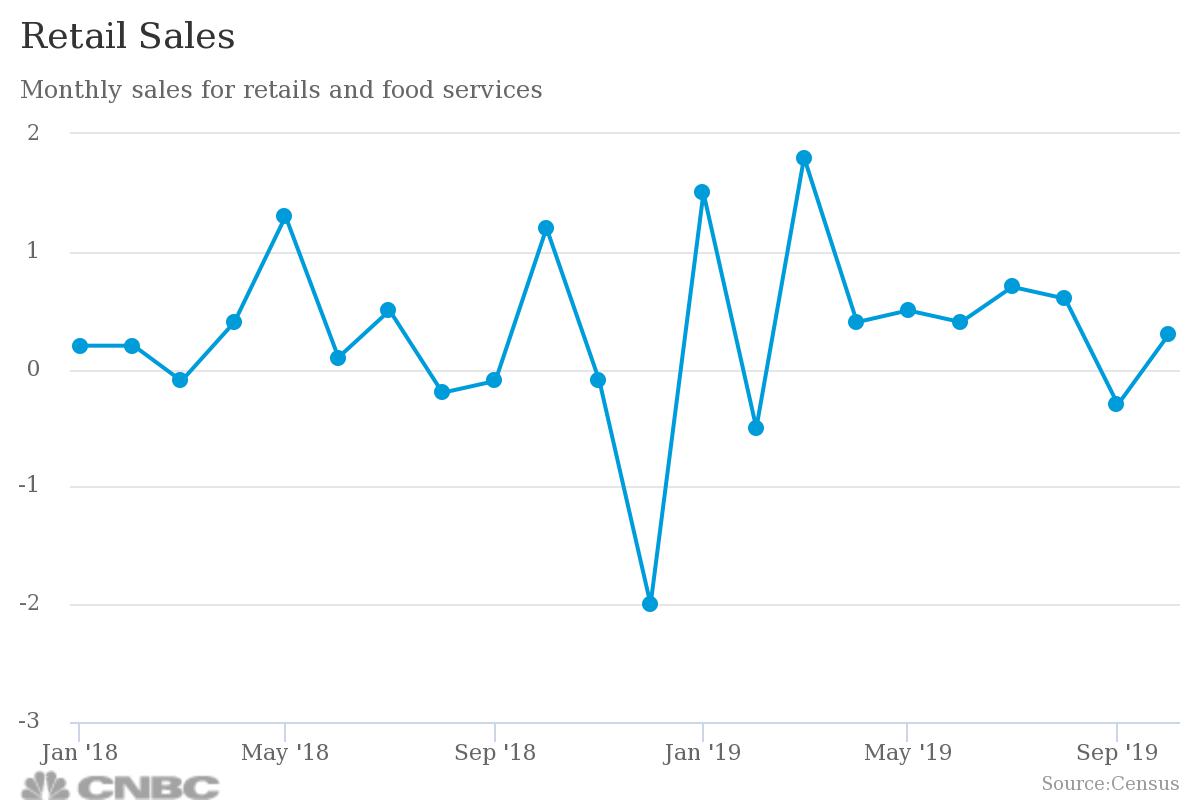Source: www.cnbc.com, November 2019
- The Commerce Department said on Friday retail sales increased 0.3% last month, lifted by motor vehicle purchases and higher gasoline prices.
- September’s 0.3% drop was the first decline in seven months.
- Consumers cut back on purchases of big-ticket household items and clothing, which could temper expectations for a strong holiday shopping season.
U.S. retail sales rebounded in October, but consumers cut back on purchases of big-ticket household items and clothing, which could temper expectations for a strong holiday shopping season.
The Commerce Department said on Friday retail sales increased 0.3% last month, lifted by motor vehicle purchases and higher gasoline prices, reversing September’s unrevised 0.3% drop, which was the first decline in seven months.
Economists polled by Reuters had forecast retail sales gaining 0.2% in October. Compared to October last year, retail sales advanced 3.1%.
Excluding automobiles, gasoline, building materials and food services, retail sales increased 0.3% last month. Data for September was revised lower to show the so-called core retail sales slipping 0.1% instead of being unchanged as previously reported. Core retail sales correspond most closely with the consumer spending component of gross domestic product.
The rebound in core retail sales added to reports this week showing firming inflation in supporting the Federal Reserve’s signal that it will probably not cut interest rates again in the near term. Other reports this month have shown solid job growth in October and an acceleration in services sector activity.

The data and easing trade tensions between Washington and Beijing have diminished financial market fears of a recession. Fed Chair Jerome Powell told lawmakers on Thursday that “the U.S. economy is the star economy these days,” compared to other advanced economies and “there’s no reason that can’t continue.”
The U.S. central bank last month cut rates for the third time this year and signaled a pause in the easing cycle that started in July when it reduced borrowing costs for the first time since 2008.
Consumer spending, which accounts for more than two-thirds of the economy, increased at a 2.9% annualized rate in the third quarter. The economy’s engine is being powered by the lowest unemployment rate in nearly 50 years and has helped to blunt the hit on the economy from the White House’s 16-month trade war with China, which had led to a decline in capital expenditure and a recession in manufacturing.
Auto sales increased 0.5% in October after declining 1.3% in September. Receipts at service stations surged 1.1%, reflecting higher gasoline prices, after dipping 0.1% in the prior month. Online and mail-order retail sales increased 0.9% after gaining 0.2% in September.
But sales at electronics and appliance stores fell 0.4%. Receipts at building material stores dropped 0.5% and sales at clothing stores declined 1.0%. Spending at furniture stores fell 0.9%, the largest decline since December 2018.
Americans also cut back on spending at restaurants and bars, with sales falling 0.3%, the most in nearly a year. Spending at hobby, musical instrument and book stores dropped 0.8%.
